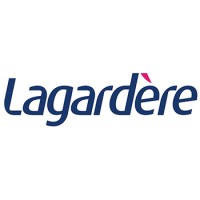
ESPN Company Cyber Security Posture
espncareers.comESPN is the leading multiplatform sports entertainment brand that features seven U.S. television networks, the leading sports app, direct-to-consumer ESPN+, leading social and digital platforms, ESPN.com, ESPN Audio, endeavors on every continent around the world, and more. ESPN is 80 percent owned by ABC, Inc. (an indirect subsidiary of The Walt Disney Company) and 20 percent by Hearst. Based in Bristol, Conn., ESPN has approximately 3,800 employees (4,600 worldwide).
ESPN Company Details
espn
11411 employees
787885.0
515
Broadcast Media Production and Distribution
espncareers.com
Scan still pending
ESP_3074304
In-progress
Between 900 and 1000
This score is AI-generated and less favored by cyber insurers, who prefer the TPRM score.
 ESPN Global Score
ESPN Global Score.png)

ESPN Company Scoring based on AI Models
| Model Name | Date | Description | Current Score Difference | Score |
|---|---|---|---|---|
| AVERAGE-Industry | 03-12-2025 | This score represents the average cybersecurity rating of companies already scanned within the same industry. It provides a benchmark to compare an individual company's security posture against its industry peers. | N/A | Between 900 and 1000 |
ESPN Company Cyber Security News & History
| Entity | Type | Severity | Impact | Seen | Url ID | Details | View |
|---|---|---|---|---|---|---|---|
| Disney | Breach | 100 | 4 | 7/2024 | THE000071624 | Link | |
Rankiteo Explanation : Attack with significant impact with customers data leaksDescription: Hacktivist group NullBulge claims to have released 1.1 terabytes of Disney’s internal Slack archives, reportedly including messages, unreleased projects, code, images, credentials, and internal links. The breach, allegedly facilitated by an inside collaborator, remained unconfirmed by Disney. The leaked data contains sensitive content and personal information, with indications that the legitimacy has been verified by security experts. This incident not only exposes Disney to the risks of intellectual property theft and privacy violations but also raises questions about the security of cloud platforms and SaaS. | |||||||
| Walt Disney World | Breach | 60 | 2 | 11/2024 | WAL000110424 | Link | |
Rankiteo Explanation : Attack limited on finance or reputationDescription: An ex-employee of Walt Disney World, possessing access to the company's passwords post-termination, compromised a third-party menu-creation system used by Disney's restaurants. The attack involved altering menu fonts and listings, resulting in unusable menus and potential allergen misinformation, leading to locked employee accounts and misuse of personal employee information. | |||||||
| Disney | Breach | 60 | 2 | 11/2024 | THE001111224 | Link | |
Rankiteo Explanation : Attack limited on finance or reputationDescription: A former Disney employee allegedly hacked the software used by Walt Disney World’s restaurants. He accessed a third-party menu-creation system and altered menus, including changing vital allergy information and locking out other employees. The incident led to unusable menu databases due to changes in the font. The hack may have had reputational and financial impacts on Disney, given the nature of the sabotage and the potential risks to customers with allergies. | |||||||
| Disney | Breach | 100 | 5 | 2/2025 | THE409030225 | Link | |
Rankiteo Explanation : Attack threatening the organization’s existenceDescription: Matthew Van Andel's wrongful termination complaint against Disney stems from a malware incident that compromised the company’s cybersecurity. After installing a seemingly legitimate AI tool, Van Andel and Disney suffered a hack resulting in the exposure of sensitive financial and employee data. Attackers leaked Van Andel's personal information, such as credit card and social security numbers, causing significant distress and requiring extensive efforts to secure affected accounts. The cyber attack's reach into personal and company data, combined with the potential damage to Disney's finances and reputation, depicts a dire situation. | |||||||
| Disney | Breach | 60 | 3 | 5/2025 | DIS901050225 | Link | |
Rankiteo Explanation : Attack with significant impact with internal employee data leaksDescription: In this incident, a 25-year-old California man, Ryan Kramer (alias NullBulge), tricked Disney employees into downloading malware disguised as an AI image-generation tool. Once installed, the malware harvested credentials and provided Kramer with unauthorized access to Disney’s private Slack channels and internal communications. One employee, Matthew Van Andel, inadvertently granted elevated privileges, enabling Kramer to exfiltrate more than 1.1 terabytes of confidential data. Stolen materials included personal information of employees, unreleased film and TV project files, and other proprietary corporate documents. When Van Andel failed to comply with threats of publication, Kramer posted the sensitive data on the BreachForums hacking site. Authorities say at least two other individuals were similarly compromised, and an ongoing investigation aims to determine the full extent of the breach. The exposure of internal communications and unreleased intellectual property poses serious reputational, legal, and financial risks for Disney, while also potentially undermining competitive positioning and violating privacy regulations. | |||||||
| Disney Consumer Products and Interactive Media | Breach | 85 | 4 | 7/2016 | THE610072625 | Link | |
Rankiteo Explanation : Attack with significant impact with customers data leaksDescription: The California Office of the Attorney General reported a data breach involving Disney Consumer Products and Interactive Media (DCPI) on July 30, 2016. The breach occurred on July 9 and July 12, 2016, involving unauthorized access to the Playdom Forum servers, compromising usernames, email addresses, passwords, and IP addresses of user accounts, affecting an unspecified number of individuals. | |||||||
| Disneyland Paris | Ransomware | 100 | 5 | 6/2025 | DIS001062125 | Link | |
Rankiteo Explanation : Attack threatening the organization's existenceDescription: The infamous Anubis ransomware gang has listed Disneyland Paris as its latest victim. The group posted details of the alleged breach on its dark web leak site, stating that the stolen data archive totals 64GB. The data was acquired during a breach involving one of Disneyland’s partner companies. The archive includes plans for various park attractions such as Frozen, Crush’s Coaster, Pirates of the Caribbean, Big Thunder Mountain, Autopia, Buzz Lightyear, Orbitron, Casey Jr., Phantom Manor, Ratatouille, and more. The group noted that Disneyland typically signs NDAs with employees, strictly prohibiting them from sharing internal material publicly. The post does not specify whether any customer or visitor information is included in the files. It also does not clarify if a ransom demand has been issued to Disneyland Paris. | |||||||
ESPN Company Subsidiaries

ESPN is the leading multiplatform sports entertainment brand that features seven U.S. television networks, the leading sports app, direct-to-consumer ESPN+, leading social and digital platforms, ESPN.com, ESPN Audio, endeavors on every continent around the world, and more. ESPN is 80 percent owned by ABC, Inc. (an indirect subsidiary of The Walt Disney Company) and 20 percent by Hearst. Based in Bristol, Conn., ESPN has approximately 3,800 employees (4,600 worldwide).
Access Data Using Our API

Get company history
.png)
ESPN Cyber Security News
Oklahoma AD Joe Castiglione to retire from role during upcoming school year
University of Oklahoma Athletic Director Joe Castiglione will retire from his full-time roll during the upcoming school year, ESPN reports.
Paris Olympics prep for cybersecurity threats
Paris 2024 is getting ready to face an unprecedented challenge in terms of cybersecurity, with organizers expecting a huge pressure on the Games ...
How to Watch ESPN Plus in Australia in 2025
ESPN+ is a premium sports streaming platform based in the United States, offering exclusive access to UFC events, live games, ...
ESPN, FOX, Warner Bros. Discovery Abandon Venu Sports Streamer Prior to Launch
The streaming service Venu Sports, which was supposed to combine the offerings of The Walt Disney Co.'s ESPN, FOX, and Warner Bros.
Walt Disney CEO sounds the alarm on streaming, ESPN
Iger flagged a major problem that will impact both the digital future of ESPN, Hulu, and Disney+ during his comments during Walt Disney's first quarter ...
‘Best School in the World’: LSU Grad Jordan Davis to Perform on ESPN’s College GameDay
A Shreveport native, Davis graduated from LSU with a degree in environmental management systems. He named his first album Home State in honor of ...
Ole Miss student Mary Kate Cornett family contacts Congressman, files police report on cyber attack
The Oxford Police Department confirmed Thursday that a police report has been filed regarding a cyber attack of University of Mississippi ...
Tips and Tricks To Stream ESPN Without Cable
In this article, we'll explore streaming platforms that let you access ESPN around the world and discuss how a virtual private network (VPN) ...
Disney names new ESPN President to spearhead the network’s digital transformation
Disney has named James Pitaro, Chairman of Disney Consumer Products and Interactive Media, as the new President of the company's leading cable ...

ESPN Similar Companies

CBC/Radio-Canada
CBC/Radio-Canada is Canada's national public broadcaster and a strong advocate of Canadian culture. We offer a unique space and a fresh Canadian perspective with unmatched cultural, musical and documentary programming. We do it in French, English and eight Aboriginal languages. Our activities prom

Alalam News Network
قناة العالم هي قناة تلفزيونية إخبارية مقرها طهران، ايران، رفعت منذ انطلاقتها في شباط/فبراير عام 2003 شعار "الحقيقة كما تراها". وتسعى قناة العالم لتوفير فرصة للتفاعل والتواصل بين شعوب المنطقة والشعوب المسلمة في جميع بقاع الأرض من خلال طرحها لمشاكلهم الحقيقية، خاصة في ظل الهجمة الشرسة لوسائل الإعلام

Sky
Sky is one of Europe’s leading media and entertainment companies and is part of Comcast Corporation, a global media and technology company that connects people to moments and experiences that matter. At Sky, we Believe in Better. It’s in our DNA. We’re famous for innovation. We offer the world’s sm

ITI Group
ITI Group was originally founded in 1984 by Jan Wejchert and Mariusz Walter. Bruno Valsangiacomo joined in 1991 as the third Founding Shareholder. They were known as the 3 Musqueteers creating from scratch leading businesses in Poland. ITI Group was a pioneer in building state of the art businesses

Nexstar Media Group, Inc.
Nexstar Media Group, Inc. (NASDAQ: NXST) is a leading diversified media company that produces and distributes engaging local and national news, sports and entertainment content across its television and digital platforms, including more than 310,000 hours of programming produced annually by its busi

Lagardere
Created in 1992, Lagardère is an international group with operations in more than 40 countries worldwide. It employs around 31,300 people and generated revenue of €8,081 million in 2023. The Group is structured around two priority divisions: - Lagardère Publishing is the world’s third-larges

Frequently Asked Questions
Explore insights on cybersecurity incidents, risk posture, and Rankiteo's assessments.
ESPN CyberSecurity History Information
How many cyber incidents has ESPN faced?
Total Incidents: According to Rankiteo, ESPN has faced 7 incidents in the past.
What types of cybersecurity incidents have occurred at ESPN?
Incident Types: The types of cybersecurity incidents that have occurred incidents Breach and Ransomware.
How does ESPN detect and respond to cybersecurity incidents?
Detection and Response: The company detects and responds to cybersecurity incidents through remediation measures with extensive efforts to secure affected accounts.
Incident Details
Can you provide details on each incident?

Incident : Data Breach
Title: Data Breach at Disney Consumer Products and Interactive Media
Description: The California Office of the Attorney General reported a data breach involving Disney Consumer Products and Interactive Media (DCPI) on July 30, 2016. The breach occurred on July 9 and July 12, 2016, involving unauthorized access to the Playdom Forum servers, compromising usernames, email addresses, passwords, and IP addresses of user accounts, affecting an unspecified number of individuals.
Date Detected: 2016-07-30
Date Publicly Disclosed: 2016-07-30
Type: Data Breach
Attack Vector: Unauthorized Access

Incident : Ransomware Attack
Title: Anubis Ransomware Attack on Disneyland Paris
Description: The Anubis ransomware gang has listed Disneyland Paris as its latest victim, posting details of the alleged breach on its dark web leak site, claiming a 64GB data archive was stolen.
Date Publicly Disclosed: 2025-06-12
Type: Ransomware Attack
Threat Actor: Anubis Ransomware Gang
Motivation: Financial Gain, Data Leak

Incident : Data Breach
Title: Disney Data Breach via Malware Disguised as AI Tool
Description: A 25-year-old California man, Ryan Kramer (alias NullBulge), tricked Disney employees into downloading malware disguised as an AI image-generation tool. Once installed, the malware harvested credentials and provided Kramer with unauthorized access to Disney’s private Slack channels and internal communications. One employee, Matthew Van Andel, inadvertently granted elevated privileges, enabling Kramer to exfiltrate more than 1.1 terabytes of confidential data. Stolen materials included personal information of employees, unreleased film and TV project files, and other proprietary corporate documents. When Van Andel failed to comply with threats of publication, Kramer posted the sensitive data on the BreachForums hacking site. Authorities say at least two other individuals were similarly compromised, and an ongoing investigation aims to determine the full extent of the breach. The exposure of internal communications and unreleased intellectual property poses serious reputational, legal, and financial risks for Disney, while also potentially undermining competitive positioning and violating privacy regulations.
Type: Data Breach
Attack Vector: Phishing, Malware
Vulnerability Exploited: Human error, Credential harvesting
Threat Actor: Ryan Kramer (alias NullBulge)
Motivation: Data exfiltration, Financial gain, Public disclosure

Incident : Malware Incident
Title: Malware Incident at Disney
Description: Matthew Van Andel's wrongful termination complaint against Disney stems from a malware incident that compromised the company’s cybersecurity. After installing a seemingly legitimate AI tool, Van Andel and Disney suffered a hack resulting in the exposure of sensitive financial and employee data. Attackers leaked Van Andel's personal information, such as credit card and social security numbers, causing significant distress and requiring extensive efforts to secure affected accounts. The cyber attack's reach into personal and company data, combined with the potential damage to Disney's finances and reputation, depicts a dire situation.
Type: Malware Incident
Attack Vector: Malicious AI tool installation

Incident : Malicious Insider
Title: Former Disney Employee Hacks Restaurant Software
Description: A former Disney employee allegedly hacked the software used by Walt Disney World’s restaurants. He accessed a third-party menu-creation system and altered menus, including changing vital allergy information and locking out other employees. The incident led to unusable menu databases due to changes in the font. The hack may have had reputational and financial impacts on Disney, given the nature of the sabotage and the potential risks to customers with allergies.
Type: Malicious Insider
Attack Vector: Unauthorized Access
Vulnerability Exploited: Insider Threat
Threat Actor: Former Disney Employee
Motivation: Sabotage

Incident : Data Breach
Title: Disney Slack Archives Breach by NullBulge
Description: Hacktivist group NullBulge claims to have released 1.1 terabytes of Disney’s internal Slack archives, reportedly including messages, unreleased projects, code, images, credentials, and internal links. The breach, allegedly facilitated by an inside collaborator, remained unconfirmed by Disney. The leaked data contains sensitive content and personal information, with indications that the legitimacy has been verified by security experts. This incident not only exposes Disney to the risks of intellectual property theft and privacy violations but also raises questions about the security of cloud platforms and SaaS.
Type: Data Breach
Attack Vector: Insider Threat
Threat Actor: NullBulge
Motivation: Hacktivism
What are the most common types of attacks the company has faced?
Common Attack Types: The most common types of attacks the company has faced is Breach.
How does the company identify the attack vectors used in incidents?
Identification of Attack Vectors: The company identifies the attack vectors used in incidents through Phishing email with malware disguised as AI tool, AI tool installation and Internal Collaborator.
Impact of the Incidents
What was the impact of each incident?

Incident : Data Breach THE610072625
Data Compromised: usernames, email addresses, passwords, IP addresses
Systems Affected: Playdom Forum servers

Incident : Ransomware Attack DIS001062125
Data Compromised: Construction and renovation files, Plans for various park attractions

Incident : Data Breach DIS901050225
Data Compromised: Personal information of employees, Unreleased film and TV project files, Proprietary corporate documents
Systems Affected: Slack channels, Internal communications
Brand Reputation Impact: Serious reputational risks
Legal Liabilities: Potential legal risks

Incident : Malware Incident THE409030225
Data Compromised: financial data, employee data, personal information including credit card and social security numbers
Brand Reputation Impact: significant distress, potential damage to Disney's reputation

Incident : Malicious Insider THE001111224
Systems Affected: Menu-creation system
Operational Impact: Unusable menu databases
Brand Reputation Impact: High

Incident : Data Breach THE000071624
Data Compromised: messages, unreleased projects, code, images, credentials, internal links
Brand Reputation Impact: Significant
Identity Theft Risk: High
What types of data are most commonly compromised in incidents?
Commonly Compromised Data Types: The types of data most commonly compromised in incidents are usernames, email addresses, passwords, IP addresses, Construction and renovation files, Plans for various park attractions, Personal information, Unreleased film and TV project files, Proprietary corporate documents, financial data, employee data, personal information, Menu data, Employee personal information, messages, unreleased projects, code, images, credentials and internal links.
Which entities were affected by each incident?

Incident : Data Breach THE610072625
Entity Type: Company
Industry: Entertainment
Location: California
Customers Affected: Unspecified number of individuals

Incident : Ransomware Attack DIS001062125
Entity Type: Entertainment
Industry: Theme Park
Location: Paris, France

Incident : Data Breach DIS901050225
Entity Type: Corporation
Industry: Entertainment
Location: California, USA

Incident : Malicious Insider THE001111224
Entity Type: Entertainment and Hospitality
Industry: Entertainment
Location: Florida, USA
Response to the Incidents
What measures were taken in response to each incident?

Incident : Malware Incident THE409030225
Remediation Measures: extensive efforts to secure affected accounts
Data Breach Information
What type of data was compromised in each breach?

Incident : Data Breach THE610072625
Type of Data Compromised: usernames, email addresses, passwords, IP addresses

Incident : Ransomware Attack DIS001062125
Type of Data Compromised: Construction and renovation files, Plans for various park attractions
Number of Records Exposed: 39,000 files
Sensitivity of Data: High
Data Exfiltration: True
File Types Exposed: Images, Videos, Drawings, Engineering-related work

Incident : Data Breach DIS901050225
Type of Data Compromised: Personal information, Unreleased film and TV project files, Proprietary corporate documents
Sensitivity of Data: High
Data Exfiltration: 1.1 terabytes of confidential data
Personally Identifiable Information: Employee personal information

Incident : Malware Incident THE409030225
Type of Data Compromised: financial data, employee data, personal information
Personally Identifiable Information: credit card numbers, social security numbers

Incident : Data Breach THE000071624
Type of Data Compromised: messages, unreleased projects, code, images, credentials, internal links
Sensitivity of Data: High
Data Exfiltration: True
File Types Exposed: text, images, code
Personally Identifiable Information: True
What measures does the company take to prevent data exfiltration?
Prevention of Data Exfiltration: The company takes the following measures to prevent data exfiltration: extensive efforts to secure affected accounts.
Ransomware Information
Was ransomware involved in any of the incidents?
Lessons Learned and Recommendations
What recommendations were made to prevent future incidents?

Incident : Data Breach THE000071624
Recommendations: Enhance security measures for cloud platforms and SaaS, Monitor for insider threats
What recommendations has the company implemented to improve cybersecurity?
Implemented Recommendations: The company has implemented the following recommendations to improve cybersecurity: Enhance security measures for cloud platforms and SaaS, Monitor for insider threats.
References
Where can I find more information about each incident?

Incident : Data Breach THE610072625
Source: California Office of the Attorney General
Date Accessed: 2016-07-30

Incident : Ransomware Attack DIS001062125
Source: Hackread.com
Where can stakeholders find additional resources on cybersecurity best practices?
Additional Resources: Stakeholders can find additional resources on cybersecurity best practices at and Source: California Office of the Attorney GeneralDate Accessed: 2016-07-30, and Source: Hackread.com.
Investigation Status
What is the current status of the investigation for each incident?

Incident : Ransomware Attack DIS001062125
Investigation Status: Unverified

Incident : Data Breach DIS901050225
Investigation Status: Ongoing
Initial Access Broker
How did the initial access broker gain entry for each incident?

Incident : Ransomware Attack DIS001062125
High Value Targets: Disneyland Paris
Data Sold on Dark Web: Disneyland Paris

Incident : Data Breach DIS901050225
Entry Point: Phishing email with malware disguised as AI tool

Incident : Malware Incident THE409030225
Entry Point: AI tool installation

Incident : Data Breach THE000071624
Entry Point: Internal Collaborator
Post-Incident Analysis
What were the root causes and corrective actions taken for each incident?

Incident : Data Breach DIS901050225
Root Causes: Human error, Credential harvesting

Incident : Data Breach THE000071624
Root Causes: Insider threat facilitated by an internal collaborator
Additional Questions
General Information
Who was the attacking group in the last incident?
Last Attacking Group: The attacking group in the last incident were an Anubis Ransomware Gang, Ryan Kramer (alias NullBulge), Former Disney Employee, Ex-Employee and NullBulge.
Incident Details
What was the most recent incident detected?
Most Recent Incident Detected: The most recent incident detected was on 2016-07-30.
What was the most recent incident publicly disclosed?
Most Recent Incident Publicly Disclosed: The most recent incident publicly disclosed was on 2016-07-30.
Impact of the Incidents
What was the most significant data compromised in an incident?
Most Significant Data Compromised: The most significant data compromised in an incident were usernames, email addresses, passwords, IP addresses, Construction and renovation files, Plans for various park attractions, Personal information of employees, Unreleased film and TV project files, Proprietary corporate documents, financial data, employee data, personal information including credit card and social security numbers, Menu fonts and listings, Employee personal information, messages, unreleased projects, code, images, credentials and internal links.
What was the most significant system affected in an incident?
Most Significant System Affected: The most significant system affected in an incident were Playdom Forum servers and Slack channels, Internal communications and Menu-creation system and Third-party menu-creation system, Employee accounts.
Data Breach Information
What was the most sensitive data compromised in a breach?
Most Sensitive Data Compromised: The most sensitive data compromised in a breach were usernames, email addresses, passwords, IP addresses, Construction and renovation files, Plans for various park attractions, Personal information of employees, Unreleased film and TV project files, Proprietary corporate documents, financial data, employee data, personal information including credit card and social security numbers, Menu fonts and listings, Employee personal information, messages, unreleased projects, code, images, credentials and internal links.
What was the number of records exposed in the most significant breach?
Number of Records Exposed in Most Significant Breach: The number of records exposed in the most significant breach was 39.0K.
Lessons Learned and Recommendations
What was the most significant recommendation implemented to improve cybersecurity?
Most Significant Recommendation Implemented: The most significant recommendation implemented to improve cybersecurity was Enhance security measures for cloud platforms and SaaS, Monitor for insider threats.
References
What is the most recent source of information about an incident?
Most Recent Source: The most recent source of information about an incident are California Office of the Attorney General and Hackread.com.
Investigation Status
What is the current status of the most recent investigation?
Current Status of Most Recent Investigation: The current status of the most recent investigation is Unverified.
Initial Access Broker
What was the most recent entry point used by an initial access broker?
Most Recent Entry Point: The most recent entry point used by an initial access broker were an AI tool installation, Internal Collaborator and Phishing email with malware disguised as AI tool.
Post-Incident Analysis
What was the most significant root cause identified in post-incident analysis?
Most Significant Root Cause: The most significant root cause identified in post-incident analysis was Human error, Credential harvesting, Post-termination access to company passwords, Insider threat facilitated by an internal collaborator.
What Do We Measure?
















Every week, Rankiteo analyzes billions of signals to give organizations a sharper, faster view of emerging risks. With deeper, more actionable intelligence at their fingertips, security teams can outpace threat actors, respond instantly to Zero-Day attacks, and dramatically shrink their risk exposure window.
These are some of the factors we use to calculate the overall score:
Identify exposed access points, detect misconfigured SSL certificates, and uncover vulnerabilities across the network infrastructure.
Gain visibility into the software components used within an organization to detect vulnerabilities, manage risk, and ensure supply chain security.
Monitor and manage all IT assets and their configurations to ensure accurate, real-time visibility across the company's technology environment.
Leverage real-time insights on active threats, malware campaigns, and emerging vulnerabilities to proactively defend against evolving cyberattacks.




